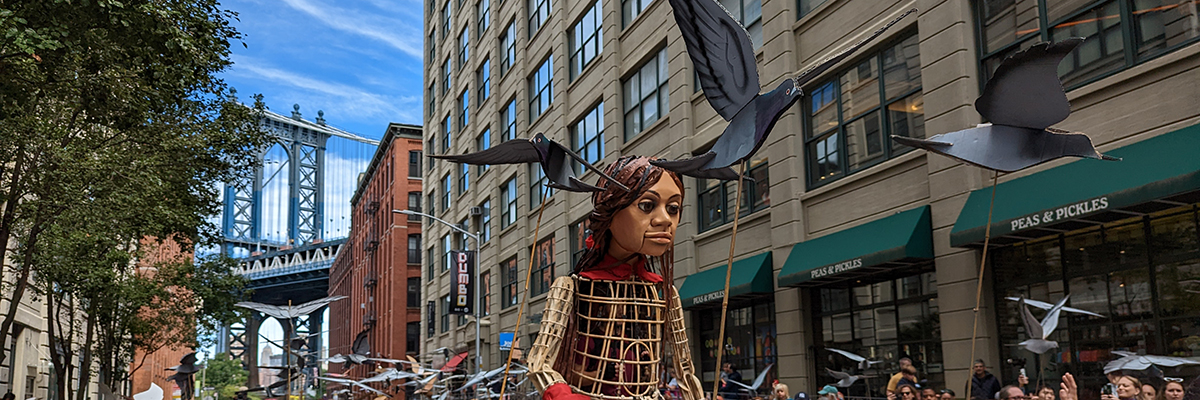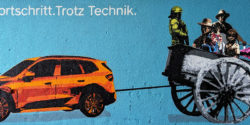‘Interactive’: an overused buzzword today, much like ‘engagement’ and its derived forms. Regardless, nothing replaces true community engagement like well-planned and executed public performance. This fall, one of the most interactive puppet performances worldwide has been traveling through New York, and thousands of people have participated.
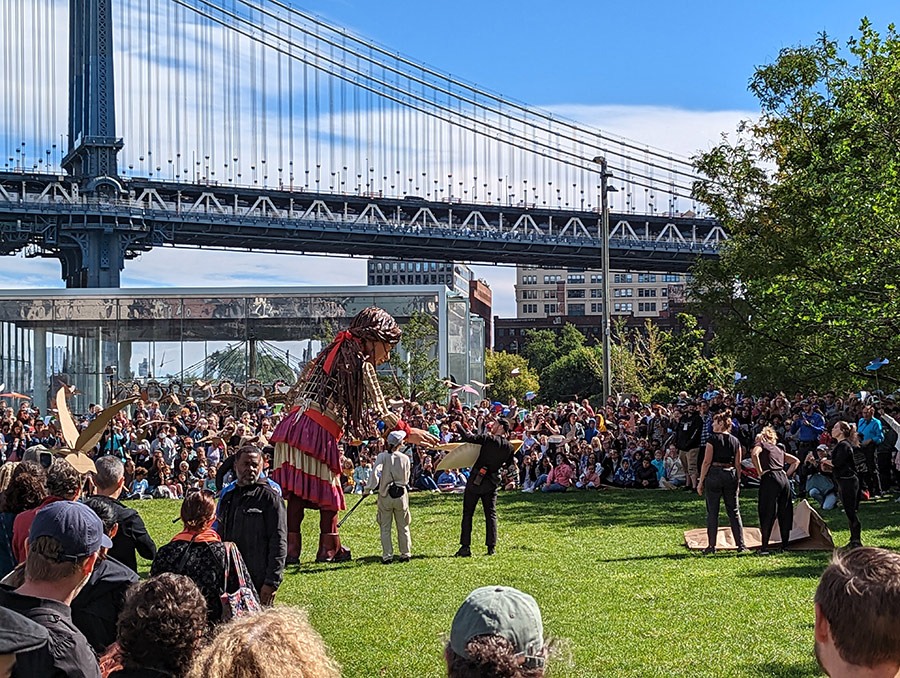
Meeting thousands of people in the streets as a way to educate us about the plight of people around the world who have become refugees, the 12-foot-tall puppet of a young Syrian girl named Little Amal is fulfilling a mission begun many months ago on the border of Syria. According to the website of Handspring Puppet Company, the South African team which made her, Little Amal has already traveled 5,000 miles in the two years preceding her New York visit.
Little Amal has traveled “from the Syrian border through Turkey, Greece, Italy, Switzerland, Germany, Belgium and France” through more than 70 towns, villages, and cities in search of her mother. She even met the Pope.
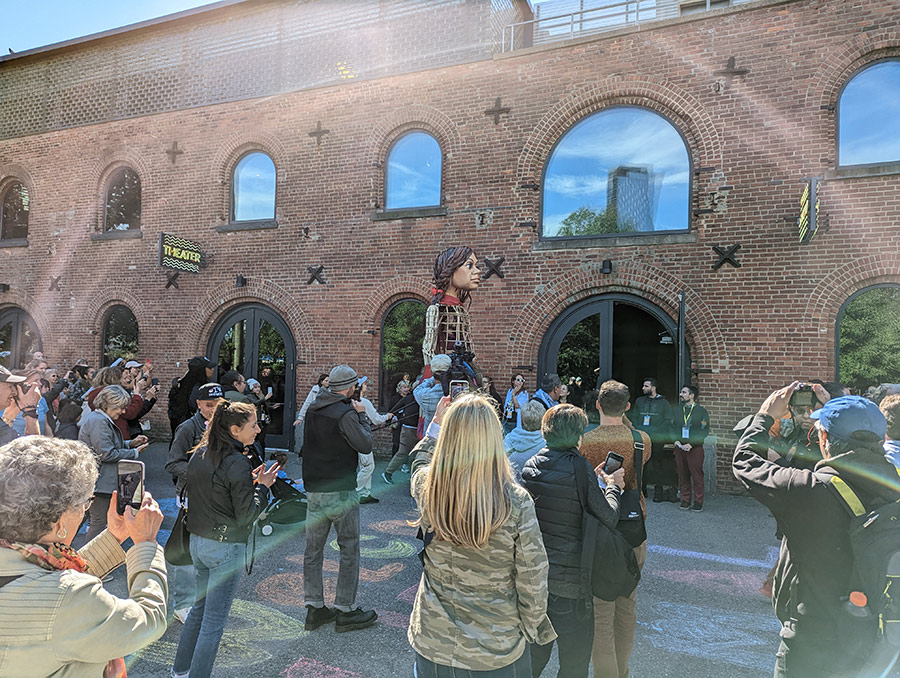
Now in New York, organizers say she is in search of her Uncle Samir. Planned events in all 5 of the boroughs mean that she is being welcomed by hundreds of artists, cultural organizations, community groups, schools, and colleges during a 55-event, 17-day traveling festival.
We share with you today images from photographer Chris Jordan, who attended one of the recent interactive performances in the DUMBO neighborhood in Brooklyn. We also spoke with transdisciplinary artist Heather Alexa Woodfield, who has created, produced, and performed pieces for various festivals and events, including at Chashama, the Edinburgh Fringe Festival, FIGMENT NYC, the High Line, and The New Museum’s Ideas City. Woodfield tells us that The Little Amal project deeply touched her as an artist and performer, and she attended many of the performances.
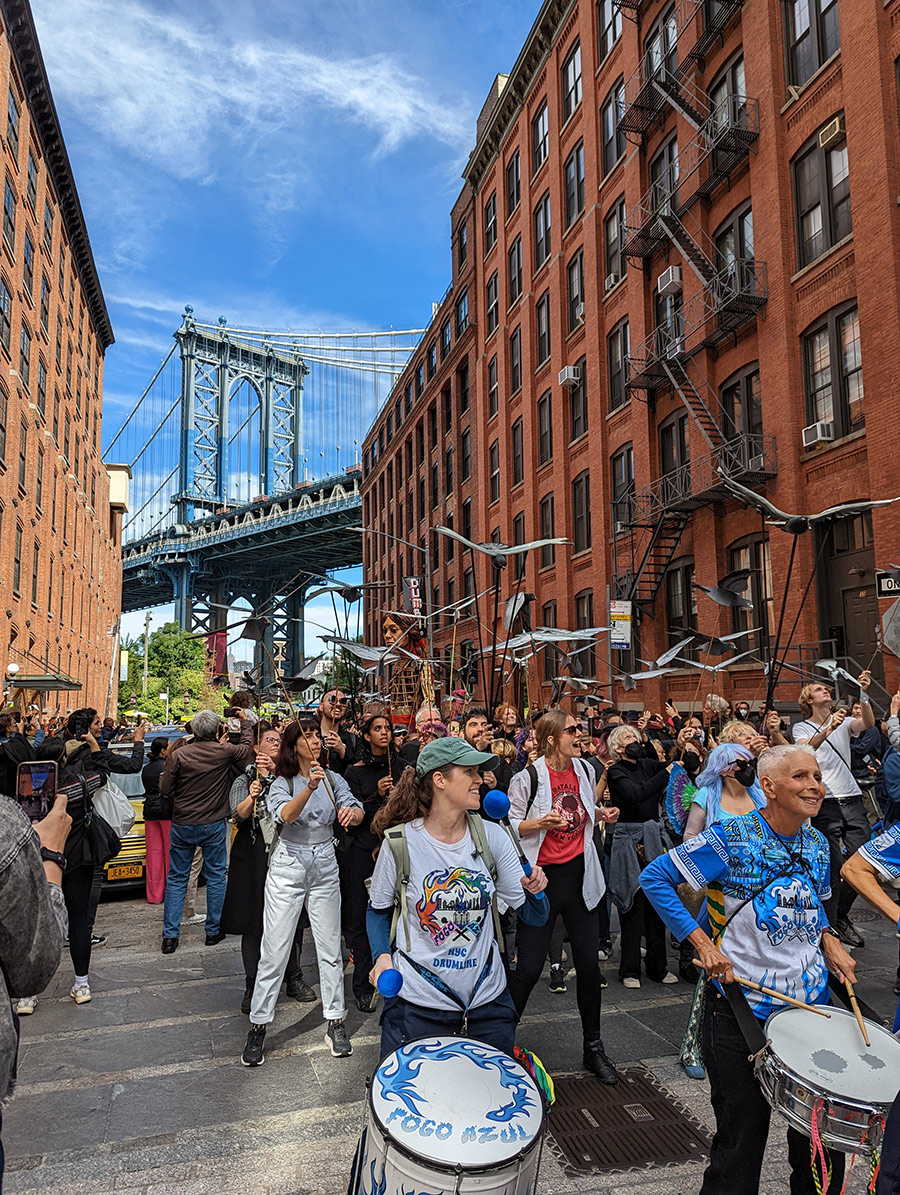
Brooklyn Street Art: How did you hear about this project and what attracted you to it?
Heather Alexa Woodfield: I saw an article in the Guardian about The Walk with Amal in the fall of 2020. When I read that it was created by Good Chance Theatre, I knew I had to see it as their play The Jungle is one of the all-time great theatrical experiences. Since I went to Bread and Puppet every year as a child, I naturally have a deep love of radical puppetry and participatory public art.
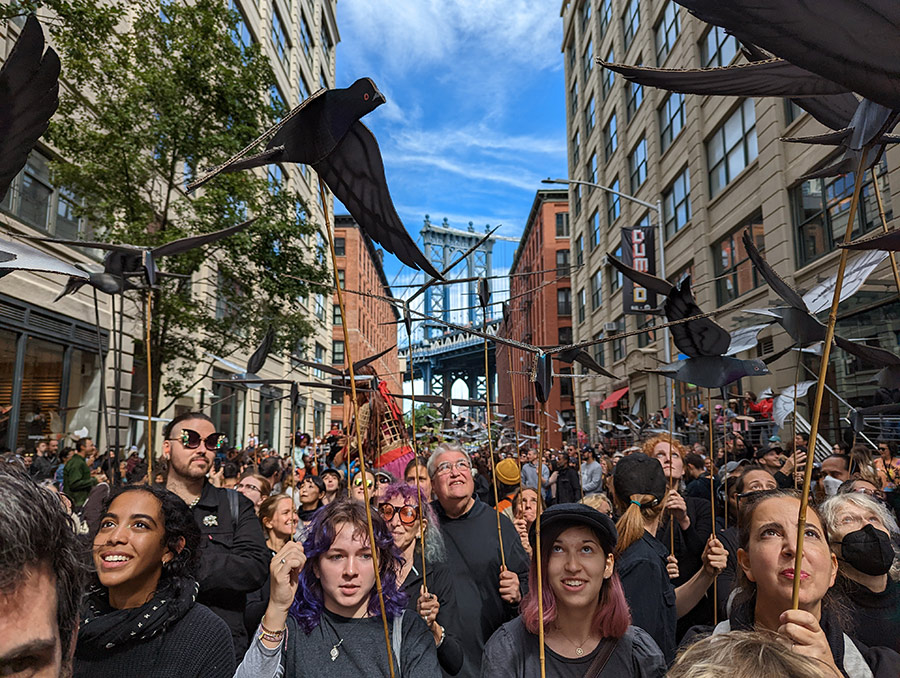
Brooklyn Street Art: How many times have you walked with Amal? Were there many others interacting with her?
Heather Alexa Woodfield: I’ve walked with Amal 10 times so far. While I’ve mostly been too busy following the puppet to estimate the size of the crowd, it always seems to fill the space she occupies whether that is a vast space like Brooklyn Bridge Park or something more contained like galleries at the Natural History Museum.
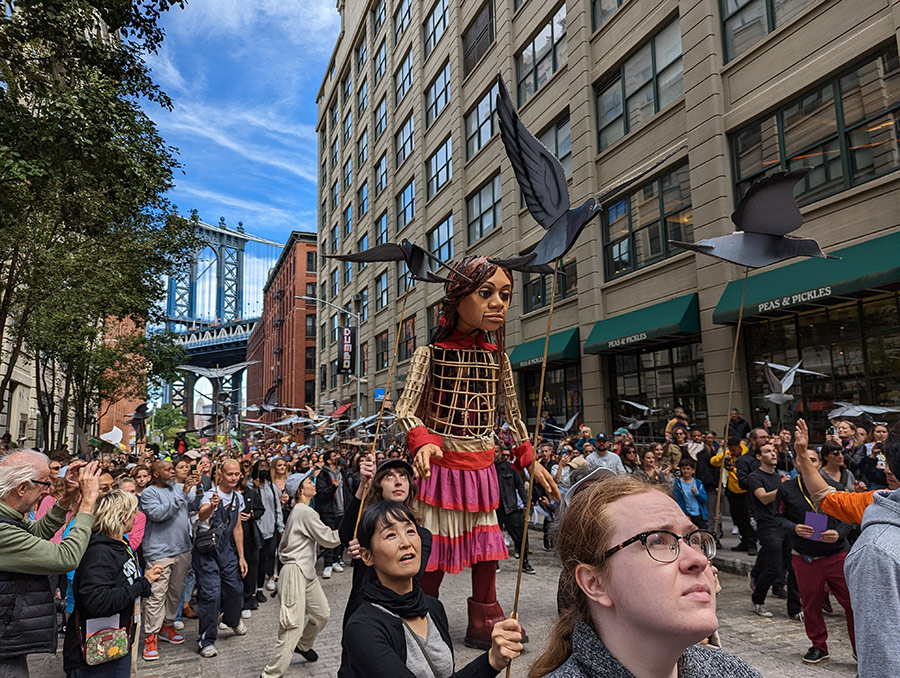
Brooklyn Street Art: What do you feel that she symbolizes to you? Do you think people who first meet her on the street grasp the intention?
Heather Alexa Woodfield: Amal is a refugee who is being honored and celebrated all across the city. She helps us imagine a world where immigrants and refugees are welcomed and respected. I don’t think people who see her randomly immediately understand that she is a refugee. However, the experience seems to make people more willing to talk to strangers. Then conversations start, and the message gets passed. I’ve heard and participated in this exchange multiple times.
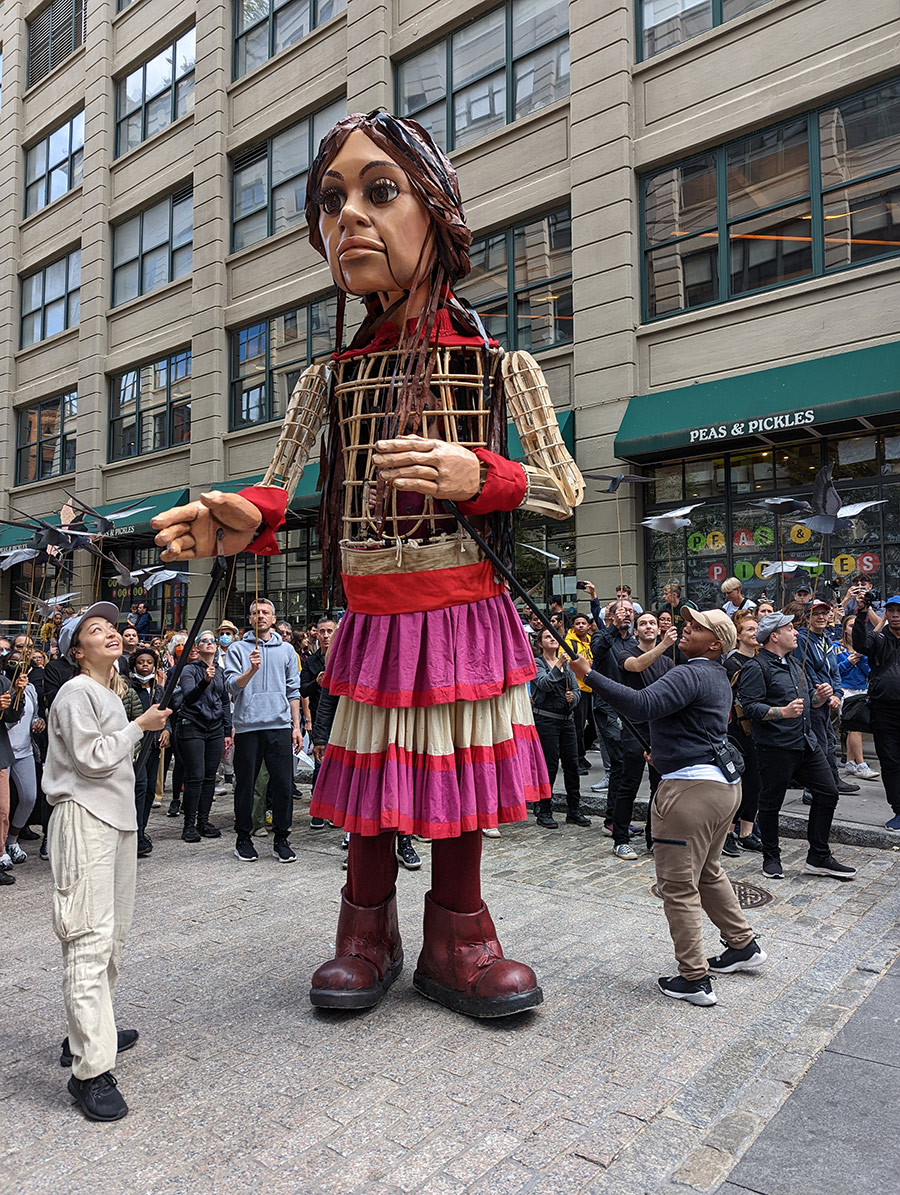
Brooklyn Street Art: How does art like this engage people in the public square?
Heather Alexa Woodfield: The public has a vital role to play in this artwork that is beyond spectator. Whether carrying a puppet bird or holding a flashlight to illuminate her face or simply walking with her, audience members become co-creators. This experience elicits a profound sense of collective joy that is reciprocal between the people who have gathered and the Amal team. I love seeing the puppeteers smiling just as much as the children around them.
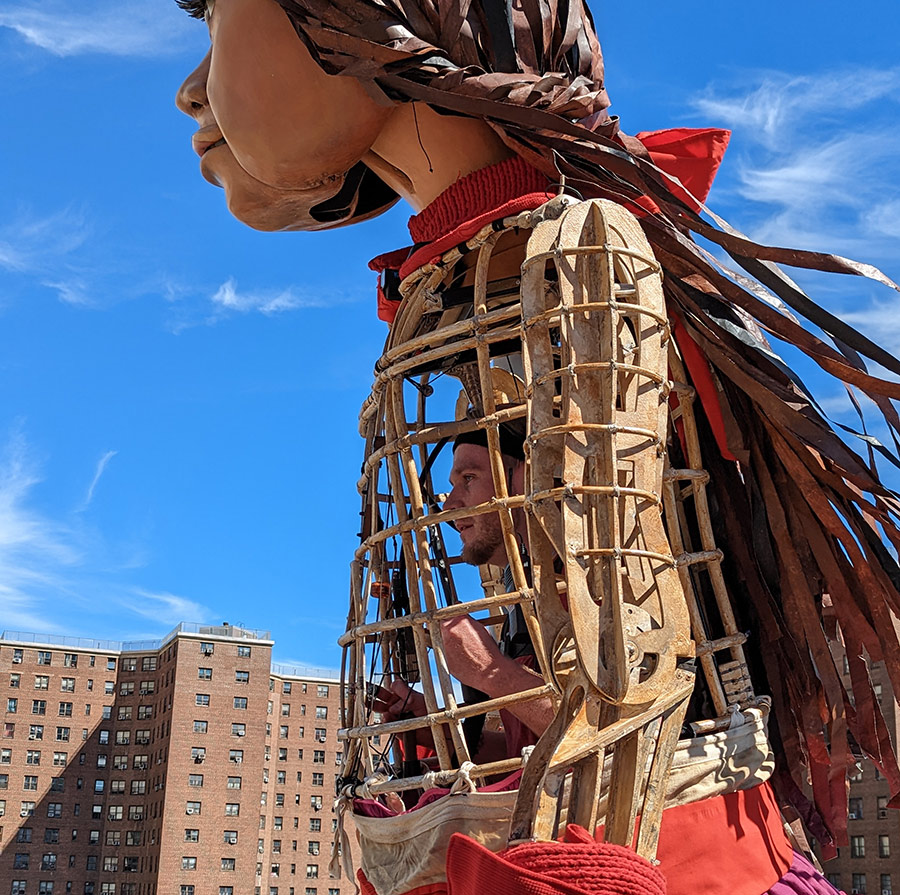
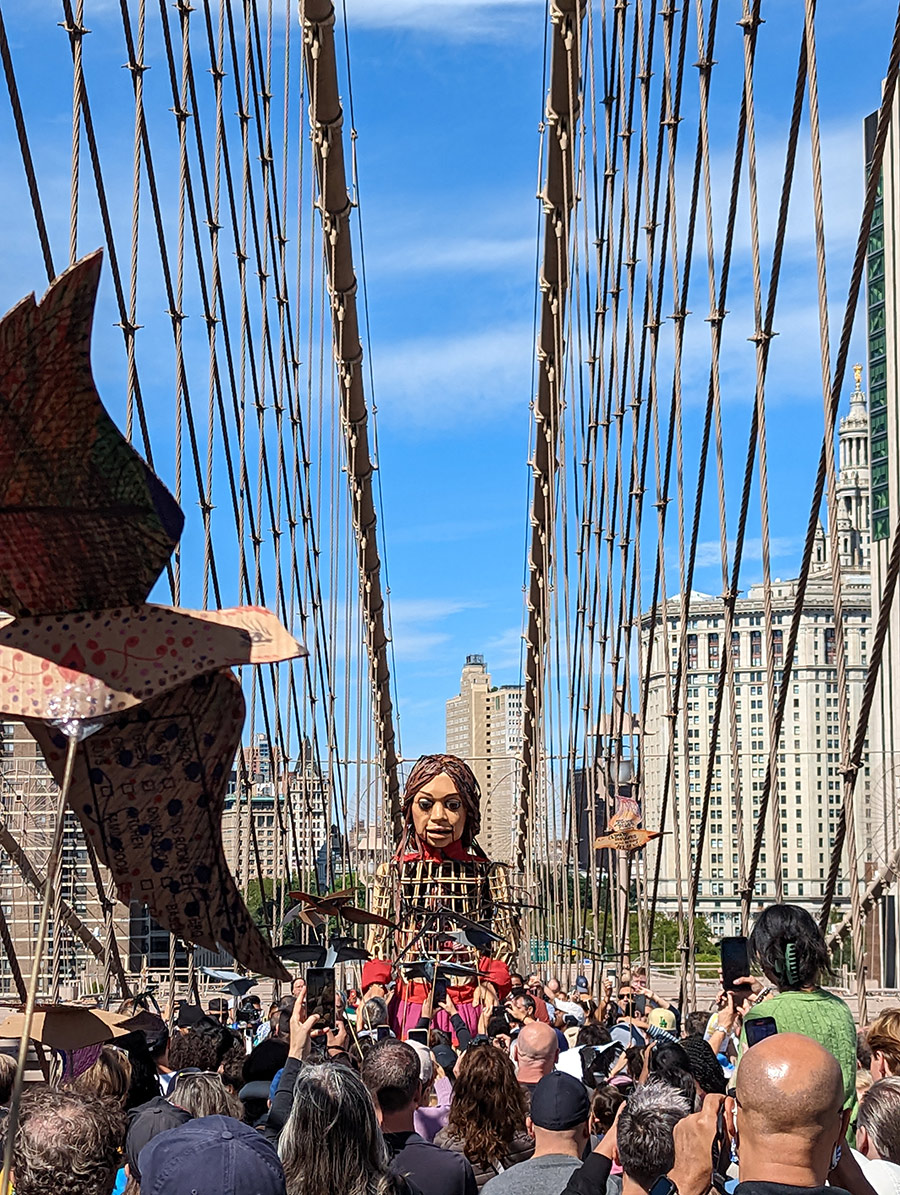
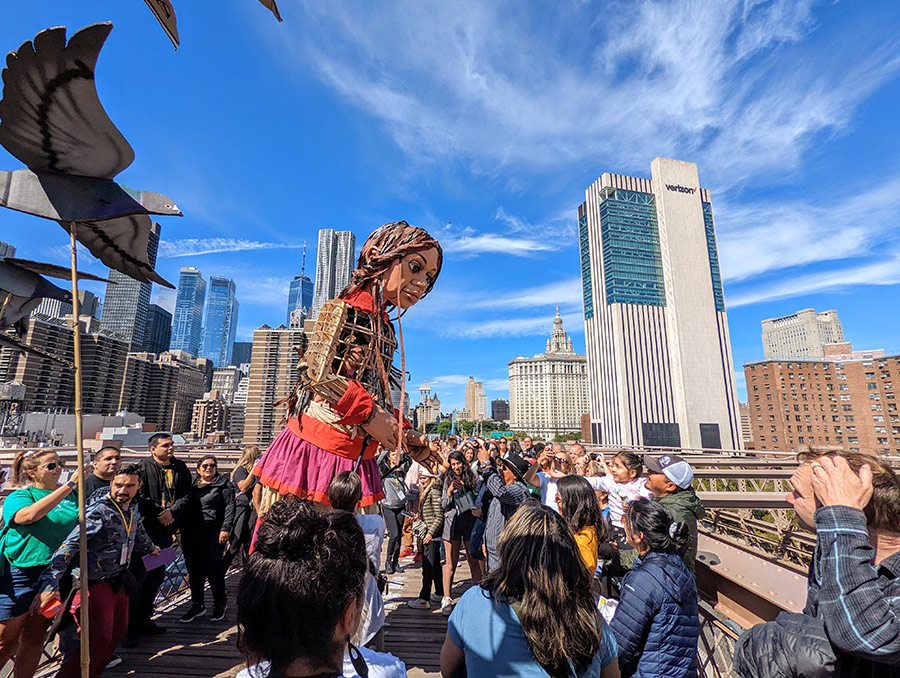
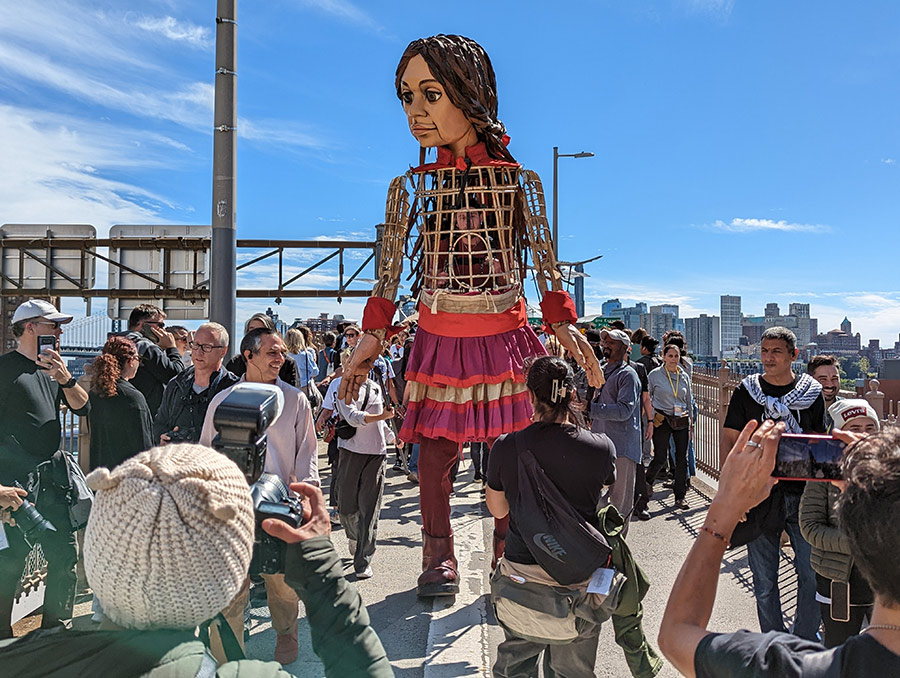
 BROOKLYN STREET ART LOVES YOU MORE EVERY DAY
BROOKLYN STREET ART LOVES YOU MORE EVERY DAY